Isabgol: Psyllium Husk: Uses, Remedies, Research, Side Effects
Ashwagola – Plantago ovata, more commonly known as Isabgol, is an Ayurvedic herb used for the treatment of constipation, distention of abdomen, herpes, piles.
Latin name- Plantago ovata Forsk.
Family- Plantaginaceae (Aswagola kula)
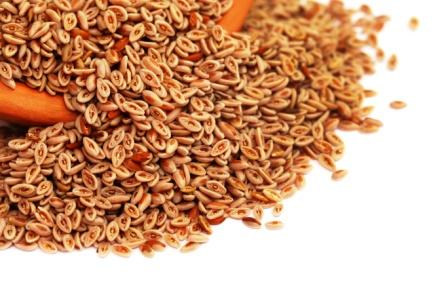
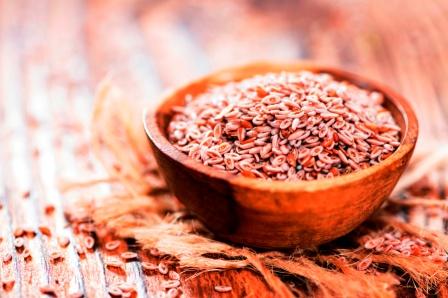
Table of Contents
Properties, part used, dosage
Isabgol medicinal properties:
Rasa (Taste) – Madhura (Sweet)
Guna (Qualities) – Snigdha (Has moisture), Guru (Heavy), Picchila (Slimy)
Vipaka – Madhura (Undergoes sweet taste after digestion)
Veerya (Potency) – Sheeta (Madhura)
Karma (Actions) – Vata pitta shamaka (reduces vitiated vata and pitta dosha) Some others opine that it balances down Kapha and Pitta Dosha.
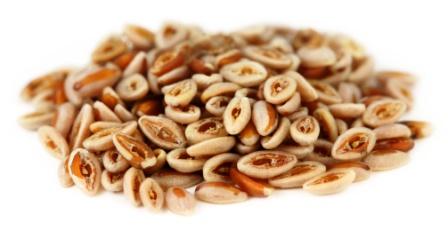
Part used- Seeds, Husk of seed
Dosage- 5 to 10 g
Chemical constituents
Chemical constituents of Plantago ovata:
The seed contains amino acids including valine, alanine, glutamic acid, glycine, cystine, lysine, leucine and tyrosine; and a mucilage consisting of a mixture of polysaccharides composed mainly of xylose, arabinose and galacturonic acid; rhamnose galactose are also present. The seeds also gave aucubin, the antibacterial principle. The seed coat contains fatty acids mainly linoleic, oleic and palmitic acids in decreasing concentrations.
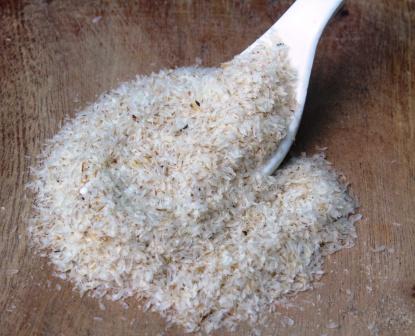
ईषद् गोलं परं वृष्यं मधुरं ग्राहि शीतलम् ।
पिच्छिलं तुवरं किञ्चित् वातकृत् कफपित्तहत्॥
रक्तातिसारास्रपित्तं नाशयेदिति कीर्तितम् ॥ ( वैद्यामृतम् )
īṣad golaṃ paraṃ vṛṣyaṃ madhuraṃ grāhi śītalam |
picchilaṃ tuvaraṃ kiñcit vātakṛt kaphapittahat||
raktātisārāsrapittaṃ nāśayediti kīrtitam || ( vaidyāmṛtam )
Uses, Indications
Uses of Ashwagol:
- The seed husk of Ashwagol is soaked in water for a couple of hours and later it is consumed to treat distention of abdomen, constipation and flatulence.
- Isabgol acts against constipation by trapping water in the colon. This makes the stools watery, thereby inducing laxative action. (research)
- The seed of Isabgol is made into powder and the powder is consumed in a dose of 3 to 5 g to treat burning sensation, excessive thirst in the body and fever.
- The seeds are fried in ghee and consumed to treat Irritable bowel syndrome.
- Seeds of Isabgol are made into paste and applied externally in cases of Herpes, Localized swelling with burning sensation, area affected with pustules.
- Cold infusion of the seeds of Isabgol is consumed in a dose of 30-40 ml to treat retention of urine.
Does Isabgol weaken the intestine?
Adverse effects
Excess use of the seeds or husk of Isabgol may cause moderate to severe purgation, leading to dehydration.
In a high dose of 25 grams per day, Isabgol was tested in 11 healthy individuals. It resulted in urinary excretion of phosphorus and iron; fecal excretion of calcium, phosphorus and iron; and the serum calcium, phosphorus and iron levels decreased significantly (P < 0.05). (research)
It means that, in higher doses and if used for longer duration (example more than 2 months), isabgol can cause decrease in iron, phosphorus and calcium.
Interaction with medicines, supplements
Can this be used while taking Homeopathic medicine?
Yes. This product does not react with homeopathic medicine.
Can this medicine be continued while taking supplements like multivitamin tablets, Omega 3 fatty acids etc?
Yes. Generally, this product goes well with most dietary supplements. However, if you are taking more than one product per day, please consult your doctor for an opinion.
With western
medicines
Seek your
doctor’s advice if you are taking this product along with other western
(allopathic / modern) medicines. Some Ayurvedic herbs can interact with modern
medicine.
If both Ayurvedic and allopathic medicines are advised together, then it is
best to take Allopathic medicine first, wait for 30 minutes and then take the
Ayurvedic medicine.
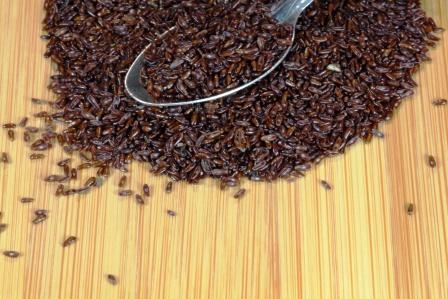
Ayurvedic medicines
Ayurvedic medicines containing Psyllium husk:
Constiwin capsule: It is a proprietary Ayurvedic medicine. It is a laxative used to treat constipation, piles, flatulence and fistula in ano.
Laxoherb powder: It is a proprietary Ayurvedic medicine. It is used to treat hyperacidity, piles, fissures, indigestion, flatulence and heartburn
Golax powder: It is a proprietary Ayurvedic medicine. It is used in the treatment of constipation, incomplete bowel evacuation, hemorrhoids, Irritable bowel syndrome and diverticulitis.
Laxogold capsule: It is a proprietary Ayurvedic medicine useful to treat constipation.
Research
Research articles related to Plantago ovata:
Anti-tumor action: Plantago major (seeds and leaves) and Cyamopsis tetragonoloba (guar beans were analyzed for general chemical components including fatty acids and amino acids. Plantago leaves extracts exhibited higher antioxidant activity than plantago seeds and guar beans extracts. The ethanolic, hot and cold extracts of plant induced anticancer activity with various degrees. Ethanolic extract of P. major leaves possessed the greatest effect on tumor cell growth (Dead 74%) followed by hot water extract of P. major leaves (Dead 54.6%).
Protection of Intestinal mucosa: To evaluate the anti-ulcerogenic effect on duodenal mucosa of the soluble fiber Plantago ovata husk, low-dose acetylsalicylic acid (10 mg/kg) was given orally to animals once daily for 14 or 28 days with and without Plantago ovata husk (100 mg/kg). 24 h after final dosing duodenal samples were removed for anatomopathological evaluation. Villi were examined by both light and scanning electron microscopy. Findings suggest that Plantago ovata husk may protect intestinal mucosa probably by limiting acetylsalicylic acid penetration into epithelial cells, although further studies are needed to confirm the same effect in other experimental models of induced mucosal damage and to elucidate the mechanisms of fiber protection.
Morphology
Morphology of Plantago ovata:
Aswagol is a small bushy shrub growing to a height of 2- 3 feet all over India. It is cultivated in some parts of North West India like Rajasthan and Punjab. The leaves are 4-8 inches long. The flower stalk is oval shaped. The fruits are little oval in shape and are about 7-8 mm long. The seeds inside the fruits are ear shaped and white in color. The seeds are mucilaginous in nature.
Vernacular names
Psyllium husk Names in different languages:
Hindi name- Isabgol, Ashwagol
English name- Spogel seeds, Psyllium, Isphagul
Arabic name- Bajkathuna
Gujarathi name- Umatho jeeru
Kannada name- Isapgolu
Tamil name- Isappa
Telugu name- Isapgol
Sanskrit synonyms
Sanskrit Synonym of Aswagol:
Ashwakarna- Seeds resemble ear of horse
Ishadgol- Seeds are little round
Sheetabeeja – Seeds are cold in potency
Ashwagol
Snigdha bija – Seeds contain oily substance
Snigdha jiraka – Seeds are oily and resemble cumin seed
Scientific classification
Kingdom: Plantae
Order: Lamiales
Family: Plantaginaceae
Genus: Plantago
Species: P. ovata
Varieties
3 types based on color of Seeds
1. white 2.Red 3. Black
Substitute
Plantago major
Plantago psyllium
Plantago purshii
Plantago aristata
Plantago rhodosperma
Plantago argentiana
Adulterant
Plantago lanceolata
Author: Dr.B.K.Prashanth M.D (Ayu), Ph.D
E mail: [email protected]
Sthanika Karma (Systemic Action)
External – Relieve burning sensation and edema. External application is indicated in vata pittaja type of headache, inflammation, Erysipelas, boils etc.
Digestive System – Unctuous, Absorbent. prevent dryness of Esophageal mucosal layer thereby facilitating the movement and elimination of malas (toxic materials due to improper digestion) .Along with cow ghee it can be used in Diarrhea. Helps to remove blockages in channels. It has antimicrobial action.
Respiratory System – Expels out vitiated kapha dosha, Indicated in dry cough
Excretory system – Induce urine production, Indicated in painful micturition, UTI etc.
Satmikarana – Indicated in general weakness, promoting body strength.
Skin – Indicated in pittaja jvara (relieve burning sensation, excessive thirst, etc. )











14 comments
Dr M.K.Bhardwaj
Some times it may cause intestinal obstruction if not taken properly .
Beside above adverse effects it causes depletion of minerals mainly of Zinc .
Satyan Namdhari
Hello,
Does it help or make things worse if it is taken with milk?
Thanks,
Satyan
Dr J V Hebbar MD(Ayu)Author
Hi, laxative effect is enhanced with milk.
Satyan Namdhari
Since hot water is recommended for better digestion, I mixed isabgol with hot water. It became one big lump — probably not the best way to consume. Looks like water / milk should be boiled first and when it cools down to luke warm then isabgol should be added and soaked in for couple of hours. Then cold water / milk along with soaked in isabgol should be consumed.
Is this right / recommended way?
Dr J V Hebbar MD(Ayu)Author
Hi, for isabgol, just the cold water mixing is good enough. No need to use hot water.
Nikk
Does consuming two tablespoons of isabgol at night chase excessive thirst throughout the day?
Kenzo
Hi,
I red about the physical benefits of Isabgol but what are the mental benefits of it?
Thanks
Dr J V Hebbar MD(Ayu)Author
It helps in improving mental clarity.
V.G.Lakshmi
Before or after food?
Dr J V Hebbar MD(Ayu)Author
After food.
Deepak Goplani
Does it weaken intestine if used for longer period or any other side effect?
Dr J V Hebbar MD(Ayu)Author
Isabgol or Psyllium husk acts as laxative by retaining water in the colon. This moistens and liquefies the fecal matter, leading to easy bowel movements. So, it has less action over the movement of colons. So, we cannot say that it weakens intestine.
But in higher dose and if used for longer duration (example more than 2 months), isabgol can cause decrease in iron, phosphorus and calcium. Hence not ideal for long term use.
Patients with constipation can switch between Isabgol, Triphala, haritaki, Indian Senna etc. once every two months.
Deepak Goplani
Can you suggest me a medicine wich has a good taste n has no side effect?
Dr J V Hebbar MD(Ayu)Author
Please see my fee etc. details here
https://easyayurveda.com/contact-details/